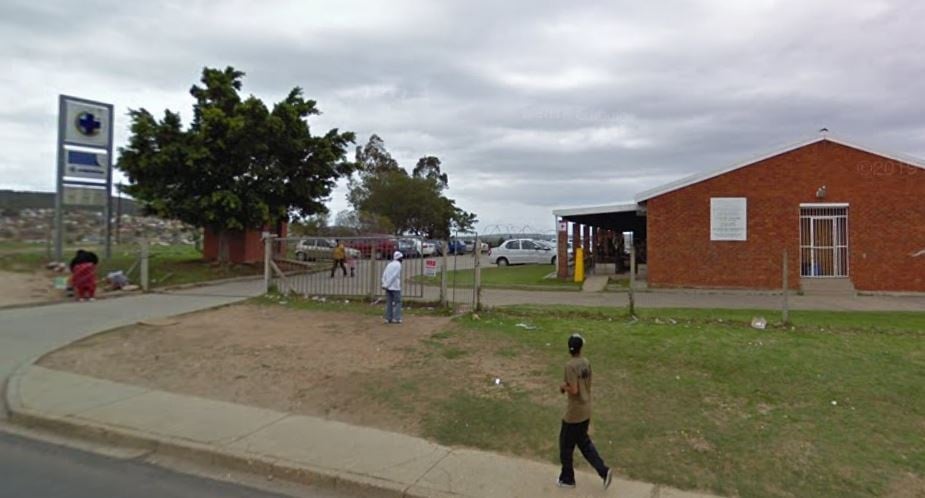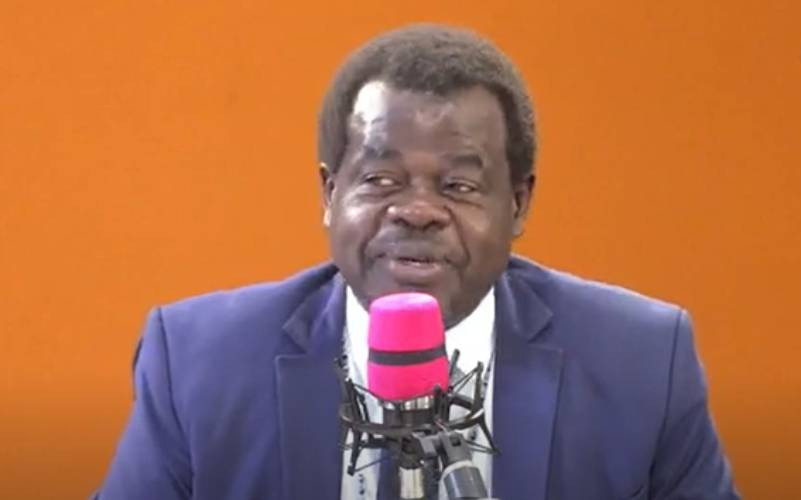- The Nelson Mandela Bay metro has had seven consecutive poor rainy seasons.
- The severe drought has forced the temporary closure or shortened operating hours of several health facilities.
- Water outages may also be contributing to outbreaks of disease.
The Nelson Mandela Bay metro in the Eastern Cape is in the grip of a severe drought after seven consecutive poor rainy seasons.
Some of the metro’s 48 clinics and three referral hospitals have had to close temporarily or shorten their operating hours.
Speaking to Spotlight on condition of anonymity, a nurse working at a clinic in Kariega (formerly Uitenhage) says: “The clinic services are constantly disrupted due to intermittent water supply. Sometimes we are forced to shut our doors and attend only to emergencies and distribute medication, leaving patients stranded. Lack of water creates an unhygienic environment contrary to the Occupational Health and Safety Act requirements.”
She says:
It is hard for us to do a physical diagnosis on patients because we don’t have water to wash our hands. We can’t even attend to newborn babies and their mothers because we are afraid that they will leave the clinic with diseases due to poor infection control. We are now relying on water tankers and Jojo tanks as our main source of potable water.
Sporadic outbreaks
Meanwhile, the health department confirmed an outbreak of non-Typhoidal Salmonella, specifically in the Kariega area, where water provision is severely limited. The drastic water cuts have repeatedly forced some public health facilities in the area to shut their doors early, while others don’t allow patients to use the toilets.
The provincial health department remains optimistic that it can manage the situation.
Nelson Mandela Bay metro’s district manager for health, Darlene de Vos, says the health sector has no option but to continue functioning – even if the taps run dry.
“We have been monitoring the water situation carefully in recent weeks as this is an incredibly challenging time for our city,” she tells Spotlight.
She adds:
Due to the lack of rain and the ensuing escalation of the water crisis, we are doing everything within our power to implement strict hygiene controls to ensure the health and safety of all patients and staff throughout this period. We all know that health institutions are the main users of water as we use a lot of water to manage infection control in our facilities.
Water outages may already be contributing to outbreaks, although the evidence isn’t yet there to prove that specific outbreaks were due to water shortages.
“There is a lot of non-Typhoidal Salmonella among children. We have not seen a remarkable increase, but every week we do get up to four cases and surprisingly more in the Kariega area than in Gqeberha,” she says.
De Vos says they do get a daily report from the National Institute for Communicable Diseases (NICD) to help manage the infection appropriately.
According to Professor Mrudula Patel, of Wits University’s Clinical Microbiology and Infectious Diseases Unit, non-Typhoidal Salmonella is common in children if strict hygiene controls are not implemented.
“The infection can be transmitted from one child to the other through contaminated food or water that will be ingested,” says Patel.
“Cross-contamination can also occur through handling vomit and stool. Again, utensils, food and water have to be free of pathogens, and, most importantly, hand hygiene of the healthcare workers through disinfection is important. Healthcare workers need to be made aware of new infection control measures,” says Patel.
According to a fact sheet from the World Health Organisation, “Salmonella is one of the four key global causes of diarrhoeal diseases”, with about “550 million people falling ill each year, including 220 million children under the age of five years”.
“Bacteria can be transmitted by contaminated drinking water and cause diarrhoea, including Shigella, Campylobacter, which is a certain type of E. coli, and non-Typhoidal Salmonella,” explains Dr Linda Erasmus, of the Centre for Enteric Diseases at the National Institute for Communicable Diseases.
She says:
However, there are also other ways in which people become infected with these bacteria (including eating contaminated food, being in close contact with an infected person/animal, and sometimes some of these bacteria can be spread in healthcare facilities).
Erasmus says cases of children in the Nelson Mandela Bay metro, with non-Typhoidal Salmonella, would need further investigation to identify the possible source(s) of infection.
“Without further information, we can’t speculate as to the likely cause(s) in these cases,” she says.
She says the NICD monitors several important diarrhoeal infections, including cholera, enteric (typhoid) fever, Shigella, and non-Typhoidal Salmonella.
“Unusual patterns of disease or a sudden increase in case numbers would be cause for alarm and trigger further investigations,” says Erasmus.
Hardest hit
De Vos says the big water challenges are in the northern areas of Gqeberha, Chatty Clinic, and West End Community Health Centre, which have run out of water.
She says:
What this entails is that there is no water for sanitation, no water for hand washing – so our staff will only see emergencies and issue chronic medication, and close the facility.
De Vos says Rosedale Clinic (in Kariega) suffered the same fate around January when it was without water for two weeks.
“Without water, a health facility cannot run. Water tanks have been placed at clinics in the red zone areas to store water. The tanks are being filled up every week to mitigate the impact of the metro’s water problems on the health service delivery efforts,” De Vos says.
There are at least 10 clinics, one hospital (Elizabeth Donkin Hospital) and one private clinic in the red zone area.
According to Patel, this is an incredibly challenging time for the city, as water in the healthcare setting is essential for washing patients, bedding, utensils, and floors.
“If there is no water, infection control is not possible. Disinfection of items that are not washed is not ideal, but it can minimise cross-contamination. Sufficient water should be sourced at least for the sterilisers, so that surgical instruments can be sterilised through steam-operated autoclaves to ensure the continued operation of theatres,” he says.
He says hospitals should have plastic drums for water storage as reserves because metal drums corrode and the rust seems to support the growth of enteric bacteria.
“Water can be decontaminated regularly using appropriate disinfectants, but should not be exposed to the skin and other surfaces.”
Water security measures
De Vos says there are various water augmentation projects underway to ensure that hospitals don’t run dry amid the ongoing drought.
“Boreholes are being drilled to alleviate pressure on our water reserves and to make sure we don’t reach a situation where we cancel surgical procedures due to a shortage of water. All our hospitals have backup water supplies, but it’s not as much as we would want to have, but all of them do have water tanks that supply facilities with water when there are outages,” de Vos says.
The municipality now ferries water from the eastern side of the city, which is less affected because they get water from the Nooitgedacht water scheme.
She says organisations, such as Gift of the Givers and the Nelson Mandela Bay Business Chamber, along with the municipality, have all chipped in and are making sure health facilities are not left behind.
“They opened a borehole at the Elizabeth Donkin Psychiatric Hospital and Jose Pearson TB Hospital that produces 14 000 litres per hour. A 220m borehole has also been sunk at Livingstone Hospital and Port Elizabeth Provincial Hospital. Should the hospital experience water shortages, the boreholes will immediately kick in, which means our health facilities will not come to a standstill, even if Day Zero arrives,” says De Vos.
The senior director of Nelson Mandela Bay Water and Sanitation, Barry Martin, insists there is enough water capacity to augment the city’s water supply and hospitals won’t come to a standstill, even if Day Zero arrives.
He says:
More than a year ago, the Nelson Mandela metro – seeing the devastating drought – consulted with the Department of Health and proactively implemented water security measures
“These included the drilling of a borehole to keep the lifeline of the bulk water supply that feeds these hospitals alive. The implementation of these measures was to mitigate the risks associated with having no or intermittent water in healthcare facilities. It is through that bulk network that emergency water supply will also be fed to ensure the ongoing provision of healthcare and the safety of patients.”
Martin says the municipality is also fast-tracking the drilling of boreholes.
“However, to compensate for the metro, we have had to put the necessary controls in places such as communal water collection sites and standpipe collection points to alleviate pressure on our water reserves at the hospitals. We have already looked at how we can bring whatever water we have into the stream and we have looked at those contingency plans.”
He says they have made “great progress” to alleviate Day Zero, such as drilling more boreholes and diverting water from Nooitgedacht Water Treatment Works to other red zones. (Red zones are classified as areas that are most at risk of running out of water).
“But that would not mean that we will relax our water restrictions,” he cautions, adding that residents should be cautious with their water consumption.
*This article was published by Spotlight– health journalism in the public interest.


















.jpg)


Discussion about this post